In the prologue to his Autobiography, Bertrand Russell describes his life’s passions: ‘I have wished to understand the hearts of men…. And I have tried to comprehend the Pythagorean power by which number holds sway above the flux.’
At the risk of over-simplification, understanding the hearts of men has always been the scholarly pursuit of the humanists, while scientists seek the fundamental and immutable laws of nature or what holds sway above the flux. Situated somewhat in the middle, cognitive scientists till the human mind for the intractable processes of human cognition and reasoning. Through the common Sudoku puzzles that have fascinated millions around the world, Prof. Louis Lee of the Department of Educational Psychology believes he might have found evidence that everybody has deductive abilities.
Deduction is the reasoning process by which one draws conclusions that necessarily have to be true if the given premises are true. It can be illustrated by a simple syllogism:
All cars are wheeled vehicles.All wheeled vehicles can move.Therefore, all cars can move.
Those who stand on the nurture side of the nature-nurture debate would argue that even if it does not take a mathematician or logician to make the above deduction, at least some kind of training is required. Professor Lee’s findings point the other way.
When Professor Lee was still a PhD candidate at Princeton University, he noted with special interest the Sudoku puzzles serialized in the Times, whose readership ranged from the age of 8 to 80, regardless of educational level or socio-economic status.
Sudoku puzzles are digit placement puzzles said to derive from the Latin squares of the great 18th century mathematician Leonhard Euler. A typical puzzle is a 9 × 9 matrix which itself is further divided into nine smaller matrices of 3 × 3. Numbers appear in some of the cells of the matrix but some cells are empty. The challenge is to fill in the missing numbers in all the empty cells according to the general rule that every number from 1 to 9 must occur exactly once in each row, in each column, and in each of the smaller 3 × 3 matrices. Sudoku puzzles differ in terms of difficulty, from easy, mildly difficult, difficult to fiendish.
As Professor Lee sees it, though the task is to find the missing numbers, Sudoku has nothing to do with numbers or computation. Any symbol or object can take the place of the numbers in the rows and columns of the puzzles. Pure deductive reasoning is required for solving Sudoku puzzles. Professor Lee further postulated that even naïve individuals were able to use simple tactics to complete the task. A simple tactic is one that starts with definite digits and that enables individuals to deduce the missing digit from them. For example, if the numbers 1 to 8 already appear in a row, then the missing one must be 9. A series of simple tactics would become the steps in a strategy for finding the solution to a puzzle.
Obviously, the difficulty of a particular puzzle would depend on the number of constraints involved, or what is known as relational complexity. For instance, if the missing number has to satisfy the general rule for both a row and a column, more effort and time would be required. In this example, the row and the column are the two constraints on the possible world of answers and the relational complexity would be 2. Lastly, simple tactics may not suffice for difficult puzzles and advanced tactics are called for. Such an advanced tactic would involve two steps: first, the individual infers a set of possibilities for certain cells; then he/she uses these possibilities to eliminate possibilities from other cells. In each of these steps, however, the individual would still rely on simple deductive tactics.
In the first experiment designed to test these hypotheses, Professor Lee and his co-authors asked some CUHK students who had never play Sudoku puzzles to tackle three: mildly difficult, difficult, and fiendish (Figure 1 to 3) and fill in as many missing numbers as possible within 15 minutes. They were also asked to justify why they had chosen the numbers. It was found that the students spontaneously acquired some deductive tactics within the 15 minutes of their first encounter with Sudoku. The majority of them employed the simple tactics as predicted by the experimenters. The justifications they gave also showed that they were aware of and could articulate on those tactics.
In the second experiment, some Princeton students were asked to infer the missing numbers in a series of puzzles with relational complexity ranging from 2 to 5. It was found that the tactics employed rose in difficulty with their relational complexity. With more difficult puzzles, the students discovered that they would have to develop advanced tactics requiring them to keep a record of the possible numbers in the cells. In other words, simple tactics suffice for easier puzzles, but fail with more difficult ones.
In the last experiment, 20 CUHK students were divided into two groups for testing the theory of advanced tactics. One was given puzzles similar to the second experiment but with possible numbers given in some of the empty cells (Figure 4). The other was given puzzles with no possibilities provided. In other words, the first step of an advanced tactic is waived for the first group so that they could straightaway use the given possibilities to eliminate the possibilities in the other cells. As predicted, it was faster and easier for those in the first group to solve the puzzles.
Professor Lee and his co-authors conclude: ‘In sum, the puzzles establish that logically naïve individuals have the competence to make deductions about abstract matters, and that they enjoy exercising this ability...’ * The conclusion calls in question many psychological theories claiming that deductive reasoning is an ability acquired through education and experience.
The observation that some students switched strategies to tackle difficult Sudoku puzzles also tells us something about the mental process of problem-solving or even about human creativity. In fact, Professor Lee has combined his research interest with his passion for tutoring the young, as Dean of Students of Wu Yee Sun College. Through simple but mind-provoking games and puzzles, he encourages his students to think about thinking, analyse its process and develop creative solutions. In his course ‘The Psychology of Thinking and Its Applications’, for instance, he discusses the effectiveness of different hypothesis testing strategies with students through playing the once-popular game MasterMind. The understanding of the human mind with all of its intractabilities and vicissitudes will continue to occupy him in the time to come. 
* N.Y. Louis Lee, Geoffrey P. Goodwin & P.N. Johnson-Laird (2008): The psychological puzzle of Sudoku, Thinking & Reasoning, 14:4, 342–364, at 360.



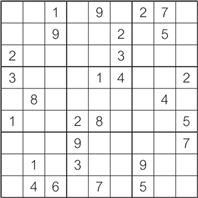
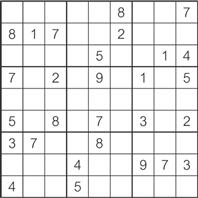
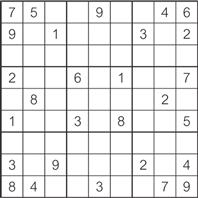
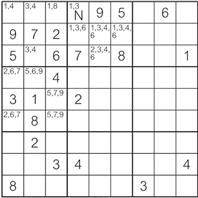


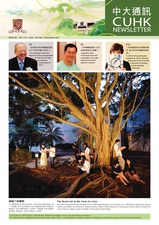




























































































































































Social Bookmarks